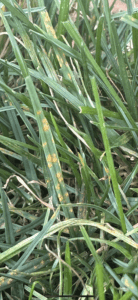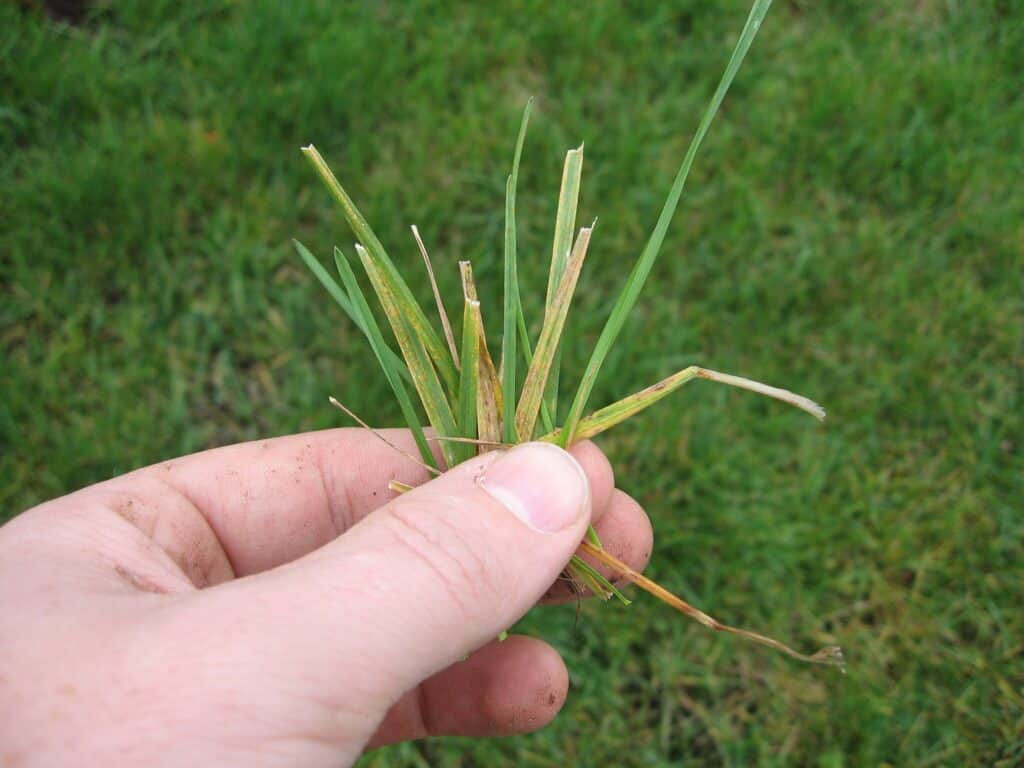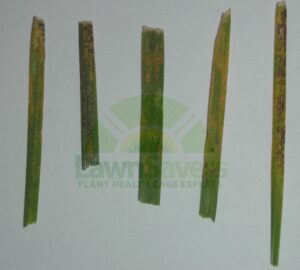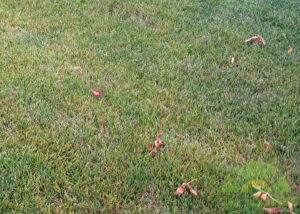Lawn Rust, a fungus of the Pucciniaceae family, is a lawn disease condition that stains the surface of grass blades an orange-rusty colour making the turfgrass plant appear similar to metal left out in the elements.
Heavy night time dews, cooler temperatures and more frequent rains are largely responsible for allowing it to flourish.
Lawn Rust can be ugly on a lawn but is usually harmless to grass (or your lawn mower since it has nothing to do with the type of ‘rust’ we are use to). However, it does work as a good indicator of your lawn’s current overall health and lawn care regimen as well as the current weather conditions since it (in most situations) does not appear on grass that is growing optimally, or in the right conditions; particularly with respect to moisture and humidity- in particular, night time dew on lawns, which becomes more prevalent through September, and in the spring.
Lawn Rust appears as tiny red-orange pustules on the surface of the grass blade, which can rub off and dis-colour your shoes, pants and lawn tools. It spreads on the grass blade slowly, so it will only become noticeable when the grass is growing slowly due to stress, humidity, lack of water, low fertility, or a combination.
More often than not, we at LawnSavers see it appear on lawns that have not been mowed frequently enough. Getting rid of rust on your lawn is simple – just get the grass growing vigorously again.
- Have a professional fertilization done that has a healthy amount of high quality slow release nitrogen – all of LawnSaver’s customers on lawn care packages receive regular fertilization. Winterization treatments are also a big help. LawnSavers Custom blend of fertilizer contains the right mix of nutrients for our areas unique needs. From time to time, lawns may require additional nitrogen, if they are receiving too much water or have poorer soils supporting them.
- Water deeply, early in the morning – lawns need 1.5 to 2 inches of water every week. Proper lawn watering focusing on morning watering prevents the lingering dampness which fungus loves which is more often encouraged with evening watering. The trick is longer duration, less often. Once or twice a week is enough.
- Most importantly, mow frequently (every 5 – 7 days), and bag the clippings if they
 are longer than one inch – removing the infected tops of the grass will stop it from spreading. Be sure to sharpen your blade at least twice a year to ensure a clean cut, rather than a ragged edge that attracts infection.
are longer than one inch – removing the infected tops of the grass will stop it from spreading. Be sure to sharpen your blade at least twice a year to ensure a clean cut, rather than a ragged edge that attracts infection.
Rust will run its course eventually. But if you make the changes to mowing and watering, you will develop the right habits to ensure a greener and healthier lawn for the long term!
You can learn more about common lawn fungi here.










